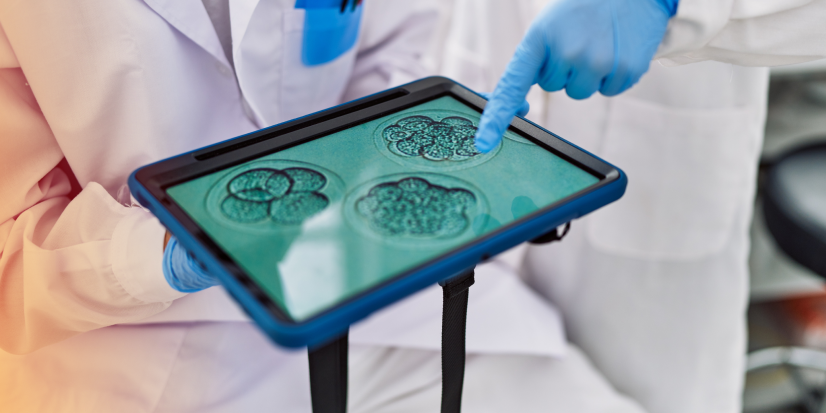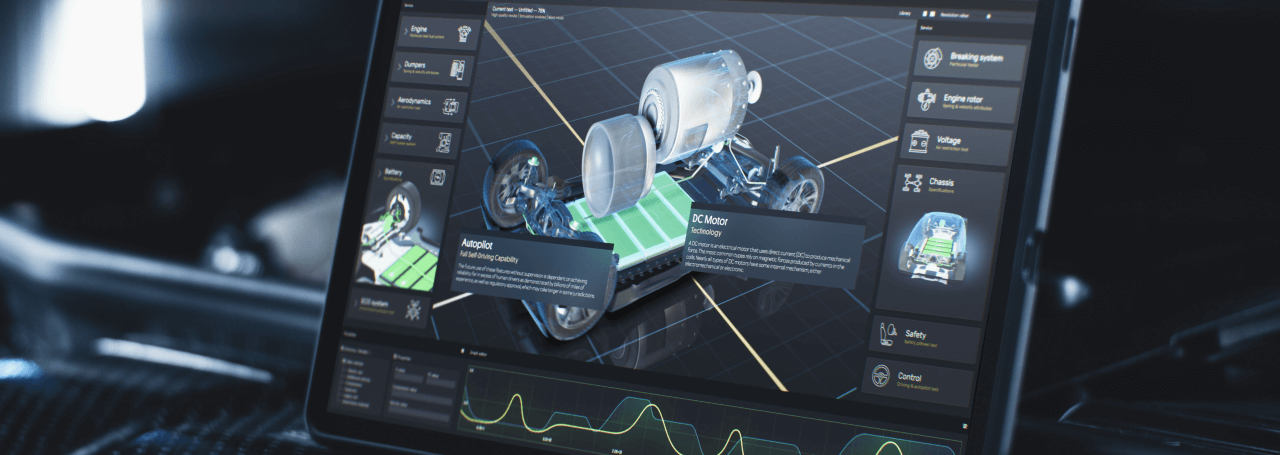PART 2.
Professional framework for the selection process
The first part of the article discussed the parameters and features to consider when designing a medical display. Go to Part 1.
In this summarizing part, you will find a practical guide to selecting the ideal display for your healthcare application, based on years of experience addressing the needs and solving the problems of Riverdi’s medical customers.
Topics covered:
- Key factors to consider when selecting a display for medical devices.
- Step-by-step guide to choosing the optimal display.
- The importance of longevity and customization in medical display solutions.
- A case study highlighting common challenges and solutions in display integration.
The importance of R&D decisions
Choosing the right display for a medical device is a critical decision that can significantly affect the device’s performance, usability and safety. Whether designing a new device or upgrading an existing one, it is essential to carefully consider factors such as size, resolution, touch capability and longevity.
This article provides a step-by-step guide to help engineers and designers select an optimal display and explains why industrial-grade technology is recommended for the specific requirements of medical applications. Additionally, a real-world case study is included to highlight potential issues in display integration and solutions to avoid them.


Step-by-step guide to choosing an optimal medical display
When selecting a display for a healthcare device, follow these steps:
- Determine the required size and information displayed
- Evaluate the amount of information that needs to be shown on the screen. Common sizes range from 2” to 12”, depending on the application.
- Select the appropriate resolution
- Estimate the required resolution—higher or lower—based on the detail level needed.
- Multiple resolution options may be available for a given size; choose the one that best meets your needs.
- Riverdi displays typically offer high resolution, ensuring clear representation of detailed information.
- Determine brightness and touch capabilities
- High brightness is crucial for medical applications, especially in varying lighting conditions. A minimum of 1000 cd/m² is recommended for optimal visibility.
- Select an industrial-grade touchscreen that:
– Operates with gloves or when liquids are present on the screen.
– Includes an optional fluid detection feature that locks the screen until it is cleaned, preventing potentially life-threatening touch errors.
- Consider longevity and availability
- Medical devices generally require at least 10 years of availability on the market. This is essential not only for ensuring long-term supply, but also justifying the time-consuming and costly design process, which typically takes from 2-5 years.
- Therefore, check product longevity early in the design process to ensure availability throughout the device’s lifecycle.
Most standard Riverdi displays provide an excellent foundation for ensuring extended longevity, with guaranteed availability for over 5 years and some components accessible for up to 15 years. This makes them a reliable choice for long-term medical applications, where it is crucial to guarantee that the selected display remains available for years to come.


Case study: challenges in display integration
In one recent case, a U.S.-based customer mass-producing a virus testing device faced significant challenges due to inadequate display selection. The device featured a polycarbonate cover with an air gap between the cover and the touch sensor. Such a combination of air and plastic created an equivalent thickness of 7-8 mm of glass due to electrical permittivity. This exceeded the capabilities of the consumer-grade controller chosen by their previous display manufacturer. As a result, the device experienced touch sensitivity issues, leading the customer to maximize the controller’s sensitivity to make the touch function at all. However, this adjustment made the controller unable to handle background noise, leading to false touch events—a critical issue in the medical field due to potential life-threatening consequences.
Riverdi’s solution involved redesigning the sensor and controller using industrial-grade components capable of handling the 7-8 mm stack while maintaining the existing mechanical structure. This approach eliminated the need for costly retooling and effectively resolved the touch sensitivity problems.
Summary of key factors in medical display selection
Carefully consider the following to ensure maximum effectiveness for your project.
| Parameter | Recommendation |
| Size | Make a decision based on the amount of information you need to display—available sizes are 2″–12″ |
| Resolution and interface | Choose an appropriate resolution for clear detail and select from the various interfaces available in Riverdi’s standard products, based on the requirements of your system |
| Brightness and visibility | Select 1000 cd/m² IPS High-brightness display with all viewing angles |
| Touch capability | Ensure it operates with gloves and fluids (or optionally disables until liquids are present) |
| Longevity | Make sure it has a minimum of 10 years of availability |
| Customization | Adjust firmware and design early with Riverdi’s experts for cost-effectiveness |
Final pro tips
For engineers and designers working on a medical device project, it is crucial to address display selection early in the development process. Begin by reviewing the key factors above, then contact Riverdi’s experts for customization services adjusted to your specific application needs. Making informed decisions from the start ensures compliance with rigorous medical certifications, avoids costly redesigns, and guarantees reliable device performance in critical environments.
Explore Riverdi’s product series below, offering over 300 standard industrial-grade models. Testing samples early with no MOQ and consulting with our team will help fine-tune your design and optimize it for long-term success.
CHECK OUT RIVERDI’S MEDICAL-READY PRODUCTS
Be sure to find the right industrial-grade touchscreen for your medical device:
- Need to enhance the brightness and optical performance of your medical display?
Choose High Brightness IPS Displays with optical bonding that perfectly reduce the reflection and correct contrast. - In search of the most effective data interchange between graphics and a truly industrial touch controller?
Check BT817Q (EVE 4) product category with revolutionary communication protocol for industrial, medical and military applications requiring beautiful and sophisticated GUI. - Looking for one of the highest resolution (1280×800 pixel) HMI displays based on STM32H7 MCUs?
Choose STM32 STM32 Embedded Displays with high performance enabled by STM32H757XIH6 (2MB Flash, 1MB RAM) microcontroller.
- Need a plug and play HDMI interface and USB-C touch solution?
Pick the HDMI Displays that are high-resolution, high-brightness IPS TFT products with optical/air bonding and industrial grade touch screen as Riverdi’s standard.
CONTACT US
Contact our expert to dive deeper into the industrial-grade medical displays for your project.
Having issues with your current technology? Want to learn about frameworks and our clients’ success stories? We are happy to discuss and assist you with your design and R&D challenges.
DISCOVER OUR
Whitepaper
Achieve the perfect user-display interaction with the right Touch Sensor IC. Ever faced issues with phantom touch events or certification? Boost your R&D like a pro with our Whitepaper!



